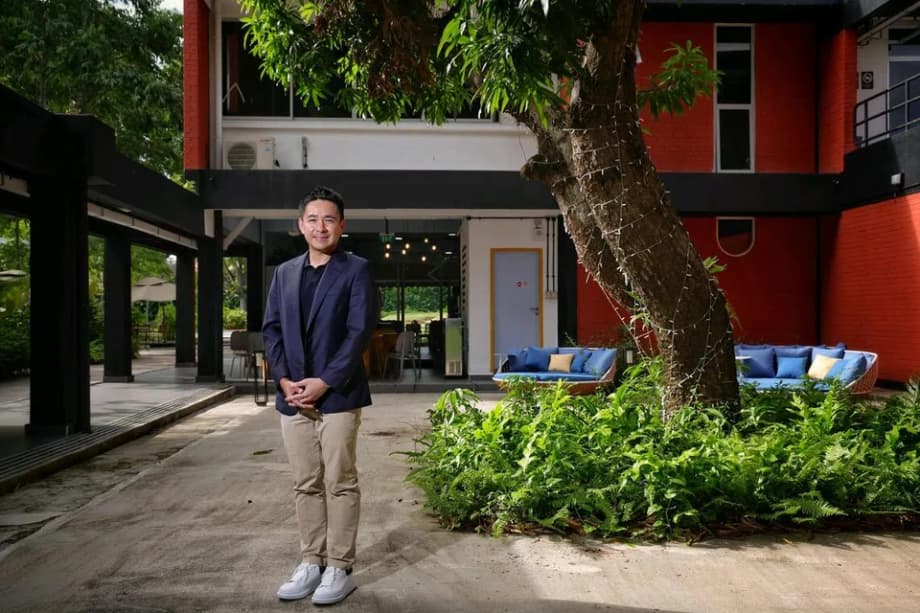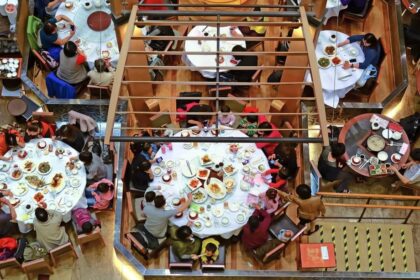Mixed age living gains ground
Singapore is moving quickly toward a super aged society, and that shift is reshaping how the country thinks about housing and care. By 2026, at least one in five residents will be 65 or older, and by 2030 the ratio rises to one in four. Families are smaller, more seniors live alone, and many older adults prefer independence with support rather than institutional care. At the same time, land is scarce and the cost of building new facilities is high. These forces are pushing public agencies and private operators to test new options that preserve autonomy, fight loneliness, and make better use of existing buildings.
- Mixed age living gains ground
- Why Singapore is testing intergenerational coliving
- Inside Commune at Henderson
- Does it reduce loneliness and stigma
- What does it cost, and who can afford it
- How the model works day to day
- What Singapore can learn from abroad
- Scaling up, policy and real estate hurdles
- Measures of success and what comes next
- What to Know
Intergenerational coliving is one of the most discussed ideas. Seniors and youths share the same development, interact in common spaces, and take part in programs designed to bring age groups together. Operators frame it as a community first approach, not a medical one. Leaders in the space say the presence of younger residents can change how families view senior living. Instead of picturing an isolated elder in a clinical setting, they see an active neighbor in a lively community. That perception shift matters in a society where filial duty runs deep and moving a parent into any form of elder housing can carry stigma.
Why Singapore is testing intergenerational coliving
Public agencies have started to support pilots that help seniors stay independent while staying connected. The Singapore Land Authority invited concepts for silver coliving at a former primary school site on Henderson Road, with a lease structured to trial the model over several years. The aim is to offer an option for older adults who do not need hospital care or intensive nursing, but who would benefit from safe design, light support, and daily social contact. Broader national efforts, such as Age Well SG and the new Age Well Neighbourhoods initiative, are steering resources to where seniors already live. Other public projects, like community care apartments, combine senior friendly homes with on site services and activities. Together these measures reflect a shift toward care in the community, not care only in institutions.
Private operators have stepped forward with new offerings. Assisted living providers now run smaller residences with hospitality style services. At the same time, coliving brands, student housing operators, and healthcare partners are teaming up on mixed age residences that pair older adults with university students or young professionals. These projects focus on programming, shared spaces, and routines that make everyday contact natural. The results are still early, but they show how underused buildings can be turned into places where generations meet, learn, and support one another.
Inside Commune at Henderson
One of the most watched pilots sits at 98 Henderson Road, on the grounds of a former primary school. The joint venture behind the project, formed by a dormitory operator and a coliving brand, won a state tender to convert the campus into a mixed age residence. After a multi million dollar refurbishment that kept much of the simple school layout, the site opened in 2025 with seniors on the ground floor and students on the upper levels. A landscaped courtyard links a block of bedrooms with a single storey building that houses a dining space, a lounge, and fitness areas.
Design and amenities
Ground floor rooms for seniors are wheelchair accessible and include elder friendly fittings such as grab bars. Nurse aides are on site, medical partners run clinics and provide emergency support, and visiting geriatricians conduct consultations. The common areas are built for interaction. A gym includes machines suitable for older adults. A multi purpose court can host games and light exercise. Shared kitchens, hobby rooms, and outdoor corners encourage casual conversations that often become lasting ties. The operators say the goal is not to replicate a hospital. It is to make a safe, attractive home where social life is part of the daily routine.
Resident mix and pricing
The residence can house hundreds of students and dozens of seniors, with a mix that leans toward youth to ensure energy and scale. Seniors choose between studio units and twin sharing rooms with meal plans and basic care packages. Pricing for older residents runs from about S$4,000 to S$6,500 per month, depending on services and meals. Youth residents, typically aged 18 to 25 and often studying at nearby institutions, pay roughly S$880 to S$1,000 per month for shared rooms on the upper floors. The pricing gap reflects the cost of care and food services for seniors, as well as the private bathrooms and accessibility features in their rooms.
Programming sits at the heart of the concept. Regular mixers, Story Circle sessions where seniors share life experiences, cooking and craft clubs, and fitness classes bring residents together. Some activities are led by students, others by seniors who teach skills such as calligraphy or money management. The team behind the project has floated incentives, such as vouchers, to encourage participation and to reward youths who contribute time to senior activities. The idea is to turn casual encounters into friendships, and to build rhythms that help both groups feel at home.
Does it reduce loneliness and stigma
Loneliness among older adults is not only a matter of company. It touches mental health, physical health, and the strain on caregivers. Mixed age housing tackles this by creating frequent, low stakes contact. A senior who might hesitate to join a club can still chat with a young neighbor in the gym or lounge. Shared routines lower the barrier to conversation. Over time, small exchanges add up to a sense of belonging. Families also gain peace of mind when they see their parent in an environment that feels like a campus, not a ward. That can soften the guilt some adult children feel when a parent chooses to live outside the family home.
Operators report that seniors who are still independent often prefer this setting to traditional institutions. They want privacy and control over their day, with help nearby if needed. Many do not want to burden adult children who work long hours or travel. Living among students brings fresh energy, while programming and light clinical support provide a safety net. Educators and parents of overseas students also value the presence of seniors, seeing it as a way to keep youths grounded and connected to local life. The daily give and take between age groups can be as simple as digital literacy tips traded for career advice, or as active as a shared game on the court downstairs.
What does it cost, and who can afford it
Affordability remains the biggest question. Senior packages at mixed age residences sit in the S$4,000 to S$6,500 range for rooms with meals and basic care. That is more expensive than renting a room in the open market, but different in kind because it bundles food, supervision, emergency response, and community programming. Some older residents have suggested that fees closer to S$3,000 would make the option reachable for more retirees. Operators say their pricing reflects the cost of quality care, staffing, and food, especially in a campus with a high level of service. They also point to the value of activity rich programs and the intangible benefit of companionship.
Lease terms influence pricing. Many pilots sit on short to medium leases to test viability, which makes it harder to spread renovation costs over long periods. Converting former schools or heritage properties is a flexible way to get started, but this model requires careful cost control. Economies of scale matter. A residence with sufficient beds and a steady pipeline of student tenants can keep fees more stable. The industry is also watching demand signals closely. Coliving operators report a rising share of tenants over 55 in their broader portfolios, a sign that older residents are warming to shared living when the environment feels safe and sociable. That trend could support larger, more cost efficient projects in time.
How the model works day to day
Daily life in an intergenerational residence depends on thoughtful design and light touch rules. Seniors live on the ground level for easy access and safety. Younger residents occupy upper floors. The ground level houses most shared facilities, so every visit to the gym, lounge, court, garden, or dining space becomes a chance to interact. Activities are usually optional. Staff nudge participation through schedules that mix practical workshops with social fun. A weekday might include a guided stretch session, a cooking demo led by a senior, a study group hosted by students, and an early evening mixer.
Care is present but discreet. Nurse aides check in on seniors who want regular monitoring. Medical partners hold clinics on site and respond to urgent needs. Wearable devices or room sensors can flag falls where installed, with consent. Privacy is protected through clear boundaries between personal rooms and shared spaces. House rules address noise, visitors, and safety. Staff trained in eldercare and youth engagement play a bridging role. They coordinate with families, watch for changes in health, and keep an eye on the social pulse of the community.
What Singapore can learn from abroad
Other Asian cities have tested versions of mixed age living that offer useful lessons. In Taiwan, a senior apartment project in Taipei rents a portion of rooms to students at affordable rates. In return, students run dessert cooking classes, host digital literacy workshops, and help seniors navigate online services. The arrangement acknowledges seniors as contributors, not just recipients. Japanese operators have also built programs that empower independent seniors to set their own activities, connect with neighbors beyond the residence, and stay embedded in the wider community. In Malaysia, integrated senior residences link independent living, assisted living, and short stay recovery near hospitals, making it easier to share staff and equipment across needs.
Two principles recur in successful projects. First, the community must feel purposeful and inclusive. Older residents are invited to lead sessions and share skills, and younger residents are encouraged to participate through recognition or small benefits. Second, services are designed across a care continuum. When mobility or health needs change, a senior should be able to access more support without losing social ties. Co locating services such as day care, home visit teams, and rehabilitation with housing can bring costs down and reduce stress for families. These ideas sit well with Singapore’s push to bring services closer to where seniors live.
Scaling up, policy and real estate hurdles
Scaling the model citywide requires alignment on land, leases, and care standards. Short leases make it tough to invest in major conversions. Longer terms improve business cases but tie up valuable sites. The state has started to test more locations, including heritage bungalows slated for multigenerational and senior coliving, while monitoring how operators manage mixed age communities. Agencies working together on housing, health, transport, parks, and land use are coordinating under national programs that support ageing in place. Concentrating services in neighborhoods with higher senior populations can deliver bigger impact from the same pool of staff and funding.
Care quality needs to keep pace with growth. Intergenerational living is not a nursing home, yet residents should feel safe and supported. That means clear protocols for emergencies, transparent price packages, and pathways to more intensive care if health declines. Operators must also plan for transitions. A resident might thrive in a mixed age setting for years, then need to move to a nursing home. Coordinating that step with families and community partners reduces disruption. Trials help refine these pathways, and future sites can learn from the first projects.
Measures of success and what comes next
Early signs will be judged on a few fronts. Resident satisfaction and participation rates show whether programming works. Average length of stay indicates if seniors and students find the environment sustainable. Health and safety metrics, such as falls and hospital visits, measure the effect of light support. Family feedback points to trust. Mixed age projects that attract interest from universities and caregivers suggest that the model is entering the mainstream. Operators are already planning more activity, including exchange programs with partner residences in the region and collaborations with local schools for service learning.
Expansion is likely to be steady rather than explosive. Some developers are exploring campuses that integrate independent living, assisted living, and nursing care on one site, so residents can move across levels without losing community. Others are eyeing clusters of smaller properties within walking distance of community hubs, clinics, markets, and parks. The common theme is community building first, bricks and mortar second. Singapore’s ageing is accelerating, and mixed age housing is shaping up as a practical tool to reduce social isolation while offering elders more choice. The pilots at Henderson and other repurposed sites will help define how far and how fast the idea can grow.
What to Know
- Singapore is becoming a super aged society by 2026, with one in four residents aged 65 and above by 2030.
- Intergenerational coliving pairs seniors and youths in the same residence to promote daily interaction and active ageing.
- The state tendered a former school at 98 Henderson Road for silver coliving, opening a pilot run with a lease of several years.
- Commune at Henderson places seniors on the ground floor with accessibility features, nurse aides, and on site medical partners.
- Senior packages typically range from about S$4,000 to S$6,500 per month, while student rates are roughly S$880 to S$1,000 for shared rooms.
- Programs include mixers, storytelling, fitness, crafts, and skills exchanges that help reduce loneliness and build community.
- Affordability is a challenge, and operators say scale and longer leases will be key to managing costs.
- Public initiatives like Age Well SG and community care apartments align with the push for ageing in place and services close to home.
- International examples in Taiwan, Japan, and Malaysia show the value of resident led programs and services across a care continuum.
- Future growth depends on stable sites, strong care standards, and the ability to help seniors transition as their needs change.












